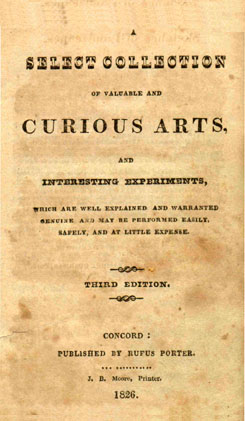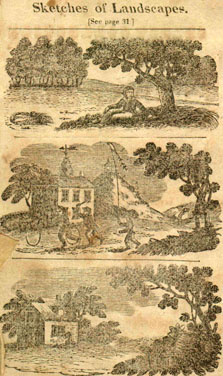Rufus Porter, The Artist
Starting as a portraitist before 1820, Porter went on to paint murals depicting the American rural scene in hundreds of homes and inns from Maine to Virginia. From simple silhouettes and ivory miniatures on to scenes dipicting entire towns or harbors Porter spread his art throughout New England. Often he would do portraits of the principal household members where he was doing the murals. His work consisted of a realistic clarity combined with a simplistic methodology. He had no formal art training and after gaining some experience rejected the academic methods of the time. Porter's working as an itinerant artist and his ofttimes flair for rapidity or efficiency reinforced each other. Rufus Porter was one of the first artists to work as a portraitist in America, nearly 50 years before the word portraitist entered the American English language.
Porter painted small ivory protraits and entire interiors of homes and inns in his work. He cut silhouettes as well. His methods and knowledge of art was published in art instruction books.
Below are two pages from one of Porter's art instruction books. Numerous art instruction books had been previously published by others, however the acceptance of Porter's books is demonstrated by its going to 5 editions in one year, and his reuse of the material in the New York Mechanic 1841-1842 and Scientific American 1845.


